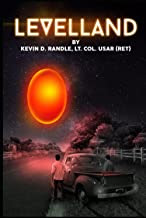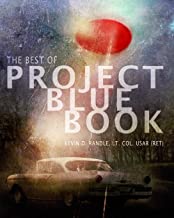The Myth and Mysteries of UFOs. By Thomas E. Bullard. Lawrence Kansas: University of
Kansas Press, 2010. 417 pp. ISBN 978-0-7006-1729-6
UFO
books run the gambit from slapped together pulp jobs with little thought to
accuracy to Ph. D dissertations that rely on scholarship without a thought to
style. Thomas (Eddie) Bullard’s book, The Myth and Mysteries of UFOs, is
one that walks the fine line between over the top scholarship and the bottom of
the barrel trash. His is a book that belongs on everyone’s shelf because of the
scholarship and the readability.
It
was, for me, confusing at first. I wasn’t sure where he was going with his
scholarship. He wrote about sightings that most of us inside the UFO community
knew about, but he often answered the questions about their reality. Or maybe I
should say about their extraterrestrial nature. Clearly something had happened,
but Bullard seemed to provide us with answers for those strange cases.
The
massive sightings of March 3, 1968, in which a number of witnesses described a
cigar-shaped UFO with windows on the side, for example, was explained as the
re-entry and break-up of the Zond IV spacecraft launched by the Soviet Union.
This has become an accepted explanation throughout the UFO community and one
not without merit.
The
case is interesting because, as Bullard notes, while some thought of alien
craft, there were those who recognized the sighting for what it actually was.
Bullard suggests that the reason there weren’t more reports of this with the
proper answer is because those who properly identified it felt no compulsion to
report it. Those who thought of it in terms of an alien craft did.
But
the real importance of the sighting was how it applied to other, similar reports.
In 1948 two airline pilots saw something that they described as cigar-shaped
with square windows. This was, of course, the same thing said about the Zond IV
reentry. A cigar-shaped craft with square windows. Of course there was no
returning space debris in 1948, but there were bolides, very bright meteors,
that could give the same impression and often do.
Bullard
looks at the UFO phenomenon through the eyes of a folklorist who is studying
the legends and myths of the human race. He notes that humans, from the very
first, were reporting the strange apparitions in the sky that we now call UFOs
or flying saucers. He looks at the history of those myths.
But
he is not telling us that all UFO sightings can be explained with such a study,
only that science might learn something about human nature, about how we view
the world as opposed to how our ancestors viewed the world, and that there is
something real happening. Some of the sightings aren’t based only on our
perceptions, but on something concrete and tangible flying, or floating,
through the sky.
He
acknowledges many of the answers for what people have seen, but also makes it
clear that these answers do not cover everything that is seen. It is impossible
to write off a UFO sighting that was witnessed by dozens, especially when the
object, or objects, are detected by radar or have been photographed or leave
traces on the ground.
In
other words, Bullard sees something of value in the study of UFOs. There is
science that can be applied, and science has been negligent in what they have
done with UFO reports. Rather than be intrigued by them, science simply ignored
them.
This
is a book that has been needed since 1969 when the Air Force sponsored study at
the University of Colorado, popularly known as the Condon Committee, rejected
the idea of UFOs. They found that not only did UFOs not pose a threat to
national security, one of the Air Force’s requirements, but more outrageously,
nothing of scientific importance could be learned by studying them. Skeptics have
cited this investigation as if it is the final word on UFOs since it was
released.
Bullard’s
book, however, is the important and long needed counterpoint. He’s not arguing
that UFOs are extraterrestrial, though it appears in some places he has reached
this conclusion. No, he’s arguing that some UFOs demand scientific study. They
might not led to alien spacecraft but they will certainly add to our knowledge
of the world around us. While national security might not be an issue,
scientific understanding of our world is.
While
alien abduction might not be extraterrestrial creatures taking humans into
their craft for examination, neither is it explained by sleep paralysis. While
sleep paralysis may, in fact, explain some abduction tales, it does not explain
them all.
Bullard’s
argument here, then, is that UFOs deserve academic study. Hufford’s study of
the Old Hag, as outlined in The Terror that Comes in the Night, which is
about bedroom visitation, led us to a more complete understanding of the
phenomenon related to sleep paralysis. The study of the UFOs might lead us to
an better understanding of our psychological make up.
With
that said, Bullard is also suggesting that there are UFO sightings that are
sufficiently strange, sufficiently documented, with sufficient eyewitness
testimony, that demand study. This might lead us right into the
extraterrestrial.
Bullard
is suggesting that we stop dismissing UFOs by saying the witnesses were drunk,
uneducated, unsophisticated, or simply of below average intelligence, and apply
our science to them. He looked at the UFO phenomenon with the eyes of a trained
folklorist and found much that required study. He is saying that other
sciences, both physical and social, might benefit from a similar academic analysis.
Ridicule
is not a way to learn something new. Ridicule is a way to dismiss something
without having to know anything about it. Bullard tells us that now is the time
to stop ignoring UFOs and actually try studying with the same sort of academic
precision that is devoted to other types of anomalies. Now is the time to begin
the real science and not the pseudo-science that has gone before.





















9 comments:
From your review I don't see that Bullard is saying anything new. Numerous writers have been saying much the same for half a century.
What were APRO, CUFOS, MUFON, BUFORA and many other organisations set up to do? To study the UFO phenomenon scientifically and objectively. True, they often deviate from this, maybe too often, but that was their purpose.
There are a great many UFO 'garbage books' and 'garbage articles', but there are quite a few sober and serious ones too. And I do not mean only skeptical ones. UFOs have not been ignored; on the contrary they have been over-studied. And yes, even a few genuine scientists have examined them, e.g. Vallee, Hynek, Michel, Maccabee. Look at all those PhDs that acted as consultants to MUFON in the 1980s and maybe even now.
So what does Bullard want that has not been written and talked about umpteen times before?
"Ridicule is not a way to learn something new. Ridicule is a way to dismiss something without having to know anything about it." -- wow, maybe we need to pass this idea along to John Stewart and Bill Maher.
I thought they engaged in satire, sarcasm and political commentary... didn't know they used ridicule to make a point. That would be counter productive. But then ridicule is in the eye of the beholder.
I do agree with the point cda makes that the list of eminent scientists, academics and other comparable figures to have seriously supported the serious study of UFOs is impressive. One could add Professors Sturrock, Mack, Meeson, Puthoff, Kaku and Macdonald to give just a handful and of course Professor Persinger has also made a signficant contribution around tectonic strain lights hypothesis and the late Paul Hill has made an interesting contribution from a technical perspective etc etc. There do seem to me, however, to be two further aspects to this issue which are more consistent with Dr. Randle's case.
All this work has been undertaken outside of and without changing the current paradigm, This in not surprising as paradigms are extremely resistant to change (for good reasons) and tend to have to enter 'crisis' first before alternatives can be seriously considered (Kuhn, T, 1962,'The Stucture of Scientific Revolution'.
The second factor is the active downplaying of the issue of UFOs as a matter of policy (e.g. The Robertson Panel recommendations) for entirely understandable reasons, regardless of whatever the actual reports themselves relate to.
Frankly, given the sociological factors at work in terms of the normative nature of scientific research and understandable need to downplay any public concern on the matter (at least in the early period and perhaps later)it is a miracle that any serious research on the subject has been undertaken at all. As a final thought, it is interesting to reflect on how paradigms change. They tend to break down from within when they become incompatable with incontrovertable data. At that point the successor paradigm tends to emerge from the range of 'ludicrous' possibilties developed by a minority of independent minded scholars, often at considerable personal cost in terms of their academic careers. Of course most such ideas are indeed just wrong, but it makes you think...
|| ... begin the real science and not the pseudo-science that has gone before.||
Over a century of repeated real-world investigations of various "UFO" scares has not produced one bit of veracious evidence for any real unknown. So the idea that there are real "UFOs" of any kind is a failed hypothesis for why people make "UFO" reports and believe in the "UFO" myth. What can only be a mere idea--real "UFOs"--is and forever will be the "least likely" hypothesis for the "UFO" myth and delusion. To continually reassert the idea of real "UFOs" as plausible, a demonstrably false belief--especially conditioned with fallacious special-pleading appeals to ignorance, ad hocs, non-falsifiable hypotheticals and wishful paradigm shifts--is the Popperian definition of pseudoscience.
The Null and Psychosocial hypotheses explain how every bit of data, every report, every detail in the history of the "UFO" myth can remain unchanged, there just aren't any real "UFOs" and never were. It's all nothing but a mass media-manufactured and perpetuated collective delusion.
The pseudoscience of ufoolery is history already; let's make popular belief in the irrational, antiscientific "UFO" delusion history as well.
I was expecting an academic work from Bullard, but the introduction was larded with the same old tired rhetoric, with so much petulant whining, that I set it down.
I hope the book gets better, but it starts off as an embarrassment.
Terry -
I went back and reread the Introduction and didn't get the same vibe that you did. True, he goes over some of the problems with UFO research, and the rejection of it in the main stream, but I just didn't see it as whining. I saw it more as an attempt to provide the reader with an overview of the situation as he sees it. Maybe you should read more of the book before condemning it.
I can't believe there are people still looking for nuts and bolts extraterrestrial spaceships. Hasn't anyone listened to Vallee? We're dealing with a more complex issue than aliens from another solar system or even galaxy. The UFO community has been repackaging the same old hype about UFOs since the beginning. In my opinion, there is more to learn about human nature (the mind) than anything else with the study of UFOs. Consciousness.
Well spoken TLC. It's absolutely beyond me too. The irony is that the ufo community is like the Catholic Church before Galileo – yet the ufologists believe that they are some heroic Galileo challenging science!
Post a Comment